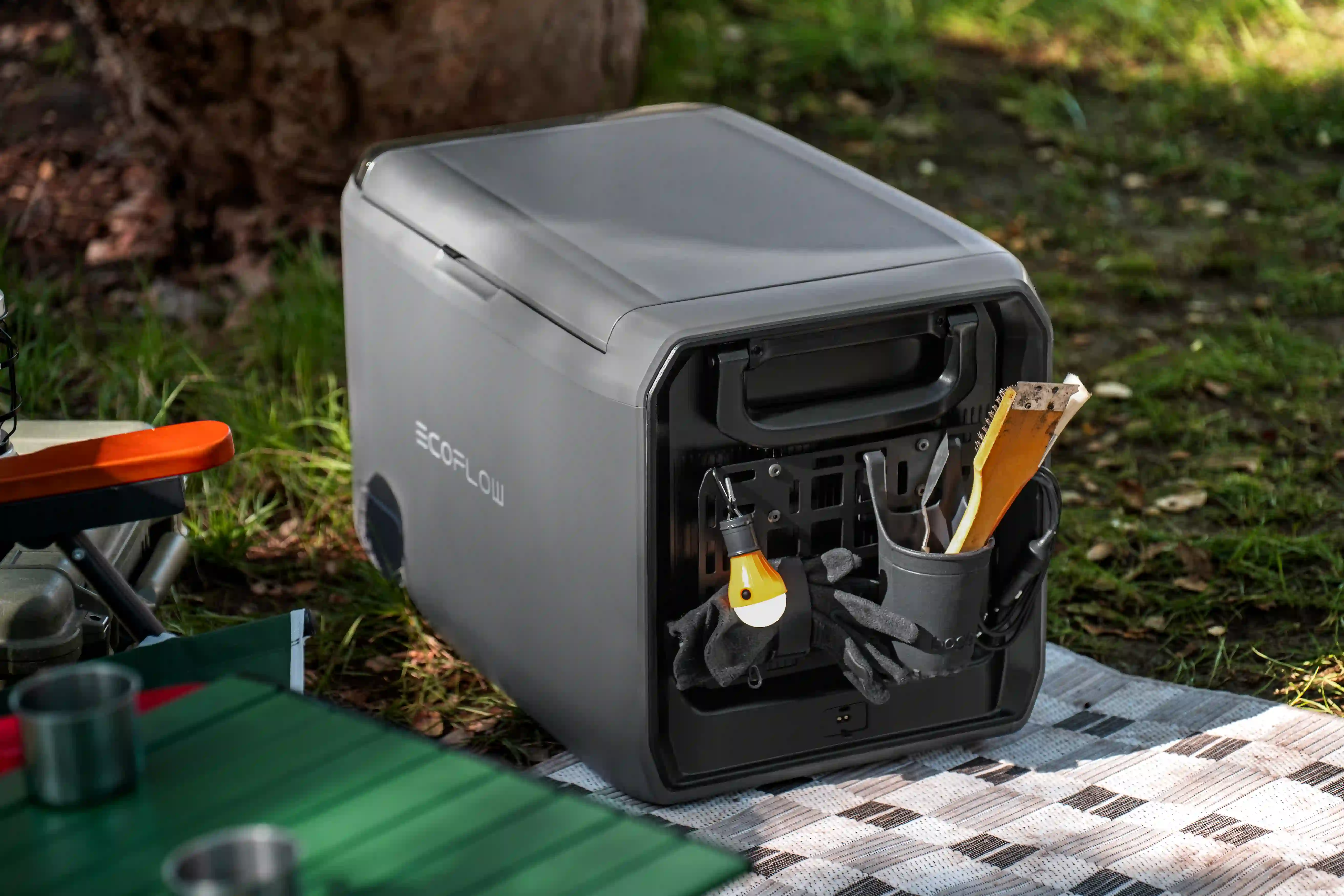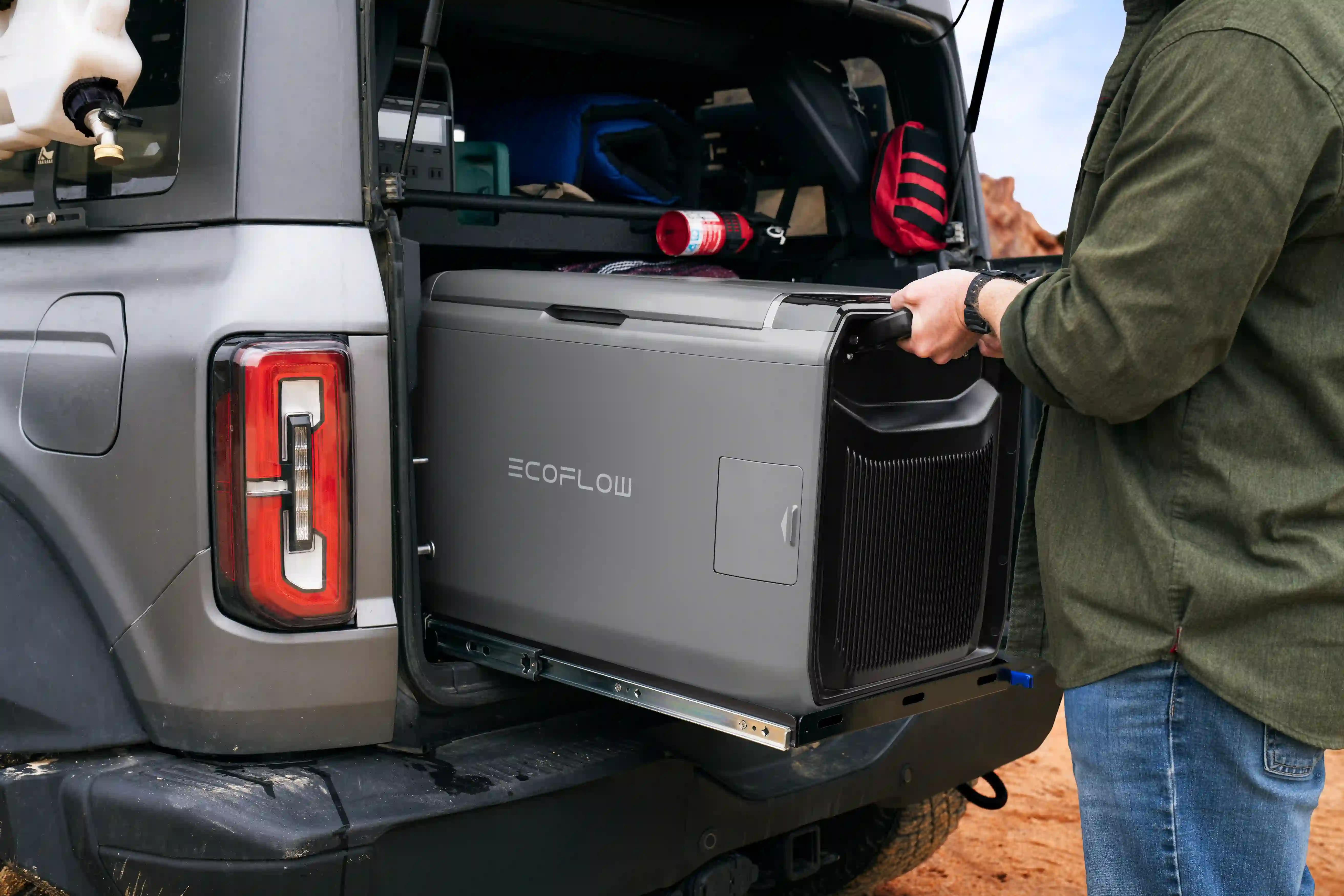Can a Portable Power Station Power a Refrigerator?
You open your fridge every day. It keeps your food safe and cold. But what if the power goes out? Or what if you’re camping, off-grid, or living in a van? A portable power station can help. It stores electricity. You can take it anywhere. But can it actually run a fridge?
How to Know If a Portable Power Station Can Run a Refrigerator
Before you connect your fridge to a portable power station, you need to understand some simple power facts. Don’t worry — it’s easier than it sounds. Just follow three steps.
1.Check Your Fridge’s Power Use
Open the fridge door and look for a label — usually found on the side wall or near the bottom. It shows the wattage, or how much power the fridge needs while running.
Here’s a rough guide:
- Mini fridges: around 50 to 100 watts
- Standard home fridges: around 100 to 800 watts
- Old or extra-large models: up to 1000 watts or more
But here’s something important: fridges do not use the same amount of power all the time. They have a compressor that turns on and off. When the compressor starts, it needs a quick jump of extra power. This is called a starting surge. For a few seconds, your fridge may need 2 to 3 times more power than usual.
So if your fridge normally runs at 150 watts, it might need 300 to 450 watts just to start. Your power station must be ready for that spike.
2.Check the Power Station’s Output
Now look at the portable power station. Find two numbers:
- Running wattage (AC output): This shows how much power the station can give nonstop. It must be higher than your fridge’s normal wattage.
- Surge wattage (peak output): This is the short burst of power it can provide for a few seconds. It must be higher than the fridge’s starting surge.
Example:
If your fridge uses 150 watts and needs 400 watts to start, then your power station must handle:
- At least 150W running power, and
- At least 400W surge power
If either number is too low, the fridge may not run, or it might stop suddenly.
3.Look at Battery Capacity
Watt-hours (Wh) show how long the power station can keep things running. The bigger the number, the longer it lasts.
Here’s a simple estimate:
- A 500Wh power station can run a 100W fridge for about 4 to 5 hours
- A 1000Wh station can power the same fridge for about 8 to 10 hours
But if your fridge uses more power — say 500W — then even a 1000Wh station may only last 1.5 to 2 hours
Always match the battery size with your fridge’s power use and your planned time of use. For longer run times, you’ll need a larger power station or a way to recharge it, like solar panels.
Pros and Cons of Using a Portable Power Station for Refrigerator
Imagine the power goes out during a summer storm. Or maybe you’re on a road trip, far from any plug. You open the fridge and wonder, Will my food stay safe? That’s when a portable power station can save the day. It’s like having a quiet helper that runs on stored energy. But before you rely on it, you should know what it does well—and where it has limits.
Great Benefits in the Right Situations
- Backup in a Power Outage
- If your home loses electricity, food in your fridge can start to spoil after just a few hours. A portable power station keeps the fridge running during short outages. This means less waste, no panic, and no last-minute trips to buy ice. It’s a smart choice during storms, wildfires, or rolling blackouts.
- Perfect for Camping or RV Life
- If you love the outdoors but still want cold drinks, chilled snacks, or baby food stored safely, a power station is your best friend. In an RV or tent, it powers a fridge quietly—no gas fumes, no loud engine. You get more freedom to stay longer in nature without giving up fresh food.
- Silent and Clean
- Gas generators are loud and smelly. They can’t be used indoors. Power stations are different. They run quietly, without vibration or fumes. You can place one in your kitchen, cabin, or even bedroom during an outage. It gives peace of mind without disturbing your space.
- Can Charge More Than Just a Fridge
- While the fridge runs, the same power station can also keep your phone, tablet, lights, or medical devices working. Some models have multiple AC and USB ports. That means your family stays connected, lit, and safe—all from one unit. If someone in your home uses a CPAP machine or medical cooler, a power station becomes even more valuable.


Limitations You Should Know
Battery Runs Out
Even the best power station has a limit. Once the stored energy is gone, the fridge shuts off unless you recharge the unit. For example, a 500Wh battery may only power a mini fridge for 4–5 hours. After that, you need to plug it back in or connect it to solar. If the outage lasts a whole day or more, this could be a problem.
Large Fridges Need Large Batteries
A compact station might work well for small coolers or mini fridges. But a full-size kitchen refrigerator pulls more power. It may drain a 1000Wh station in less than 8 hours. If you try to use a low-power station with a big fridge, it may cut off suddenly or fail to start the compressor. Always check power size before you buy.
Recharging Takes Time
When the battery is empty, recharging it can take hours. From a wall outlet, it may take 4–8 hours depending on the model. Solar charging is slower, especially if the sun is weak or clouds block the light. This means you may need to plan ahead during long outages or off-grid trips.
Surge Mismatch Risk
Many fridges need a high power boost to start. If the power station can’t handle the sudden surge (even for a few seconds), the fridge may fail to turn on. Worse, it might trip a safety shut-off. To avoid this, you must check the peak output of your power station and compare it to your fridge’s starting wattage. If the numbers don’t match, the setup won’t work.
What Is a Good Power Station Size to Run a Refrigerator?
Let’s take the EcoFlow GLACIER as an example. It is a portable refrigerator with a 120W refrigeration power rating, a 38L capacity, and even an ice maker. On average, if it runs 6–8 hours per day, it may need about 720Wh to 960Wh of energy daily.
To power the GLACIER:
- A 1000Wh portable power station is a good match for short trips or outages
- A 2000Wh station is better for long-term use, camping, or full-day backup
- If you use its plug-in battery, it may also run up to 40 hours wire-free, but having a backup station is still smart
The EcoFlow GLACIER is great for people who need both cooling and flexibility. Just remember to size your power station based on how long you want the fridge to run.


What Is the Best Portable Power Station for a Refrigerator?
You need a power station with these features:
High Surge Power. Some fridges need a strong push to start. Choose one that handles at least twice your fridge’s running wattage.
Enough Watt-Hour Capacity. For 8–10 hours of power, pick one with 1000Wh or more. Bigger fridges may need 2000Wh+.
Multiple Output Ports. Useful if you want to charge phones, laptops, or lights at the same time.
Fast Recharging. Look for AC + solar input. Some models recharge in 1–2 hours from a wall socket.
Safe for Indoor Use. No fumes. No risk of fire. Lithium iron phosphate (LiFePO₄) batteries are more stable and last longer.
Quick Guide
Power Station Size | Best For | Lasts About |
|---|---|---|
500Wh | Small coolers, mini fridges | 3–6 hours |
1000Wh | Small to medium fridges | 6–10 hours |
2000Wh+ | Full-size fridges, longer use | 12+ hours or more |
Pairing a power station with a solar panel is smart for longer power needs. It can recharge during the day and keep your fridge going off-grid or during blackouts.
Recommended EcoFlow Models for Fridge Use
EcoFlow RIVER 2 Pro
Capacity: 768Wh | Output: 800W (1600W surge)
Best For: Mini fridges or compact RV fridges
Run Time Estimate: 4–6 hours for small fridges
Recharge: 0–100% in 70 min (AC), 220W solar support
Battery Type: LFP | Weight: 18.2 lbs
EcoFlow DELTA 2
Capacity: 1024Wh | Output: 1800W (2200W X-Boost)
Best For: Most small to mid-size refrigerators
Run Time Estimate: 6–10 hours
Expandable: Up to 3kWh with extra battery
Recharge: 1200W fast AC charging | 500W solar
Battery Type: LFP | Weight: 27 lbs
EcoFlow DELTA 2 Max
Capacity: 2048Wh | Output: 2400W (3400W surge)
Best For: Full-size home refrigerators or long outages
Run Time Estimate: 12–20+ hours
Expandable: Up to 6144Wh with two extra batteries
Recharge: 1800W AC, 1000W solar (dual input)
Battery Type: LFP | Weight: 50 lbs
Powering Your Fridge With a Portable Power Station
Yes, a portable power station can run a refrigerator — if the size is right. Always check your fridge’s wattage, starting surge, and daily energy use. Then choose a power station that matches those needs. Bigger stations last longer. Solar panels help keep things going. With the right setup, you can keep your food safe, even without the grid.